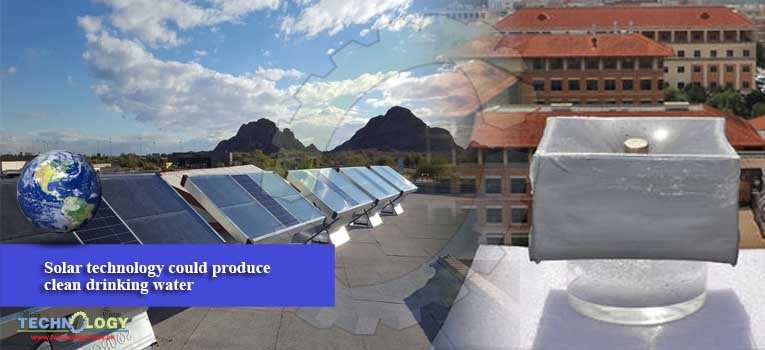Researchers have developed a new solar technology that could produce clean drinking water for millions in need. The material speeds the process of evaporation, enabling a small solar to provide drinking water.

Today people around the world lack such access, according to UNICEF. Even though technologies exist for purifying contaminated water and desalinating seawater, these typically require expensive infrastructure and lots of energy, putting them beyond the reach of many communities.
Recently, researchers have been working to upgrade solar stills as a cheap, low-tech alternative. The traditional still is little more than a black-bottomed vessel filled with water and topped with clear glass or plastic.
The black bottom absorbs sunlight, heating water so that it evaporates and leaves the contaminants behind. The water vapor then condenses on the clear covering and trickles into a collector.
But the output is low because the sun’s rays must heat the entire volume of water before evaporation begins. Commercially available versions produce about 0.3 liters of water per hour per square meter (L/h/m2) of the covered water’s surface area.
The average person requires about 3 liters of water a day for drinking. Providing enough drinking water for a small family requires a still around 5 square meters in size. Operating at their theoretical best, such devices can only produce 1.6 L/h/m2.
Now, Yu and his colleagues have created an even better hydrogel. They mixed in a third polymer, called chitosan, which also strongly attracts water. Adding chitosan to the mix created a gel that could hold more water and increased the amount of intermediate water as a result.
A solar still 1 square meter in size could produce about 30 liters of clean drinking water per day, enough for a small family. Even better, all three polymers in the hydrogel are both commercially available and cheap.